Indian Society and Social Issues: October 2024 UPSC Current Affairs | Sociology Optional for UPSC (Notes) PDF Download
World Mental Health Day
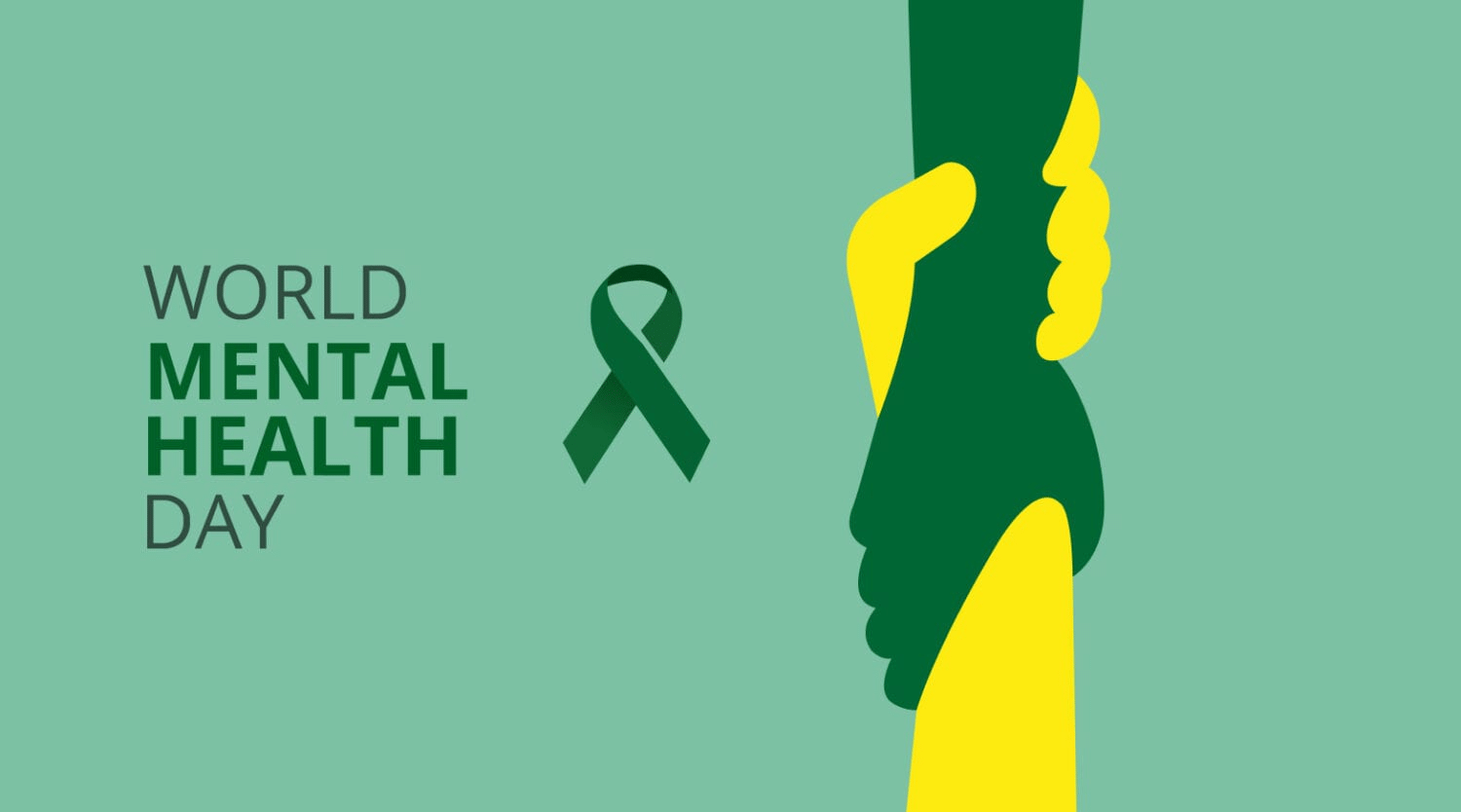
Why in news?
On the 10th of October, World Mental Health Day (WMHD) 2024 was commemorated, focusing on the alarming issue of workplace suicides that underline the severe effects of job-related stress on mental health, even among individuals who may seem outwardly successful.
Theme of WMHD 2024: Mental Health at Work.
- Background: WMHD was first established in 1992 by the World Federation for Mental Health (WFMH).
- The event is organized by the World Health Organization (WHO) to enhance awareness, promote mental health education, and fight stigma, highlighting the significance of mental well-being for both individuals and communities.
- Examples of Mental Illness: Common mental health disorders include depression, anxiety disorders, schizophrenia, eating disorders, and addictive behaviors.
- Statistics: The Economic Survey 2023-24 stresses the urgent need to increase the number of mental health professionals and enhance mental health services across the nation. According to the National Mental Health Survey (NMHS) 2015-16, 10.6% of Indian adults were found to be suffering from mental disorders, with a treatment gap ranging from 70% to 92% for various conditions.
Government Initiatives
- District Mental Health Programme (DMHP): Aimed at integrating mental health services into the general healthcare system at the district level.
- National Tele Mental Health Programme (NTMHP): This program enhances access to mental health services through telecommunication.
Policy Recommendations on Mental Health
- Efforts should be intensified to increase the number of psychiatrists from the current ratio of 0.75 to the standard of 3 per lakh population.
- There is a need for sensitization regarding mental health at the preschool and Anganwadi levels to facilitate early identification of disorders.
International Day of the Girl Child and BBBP
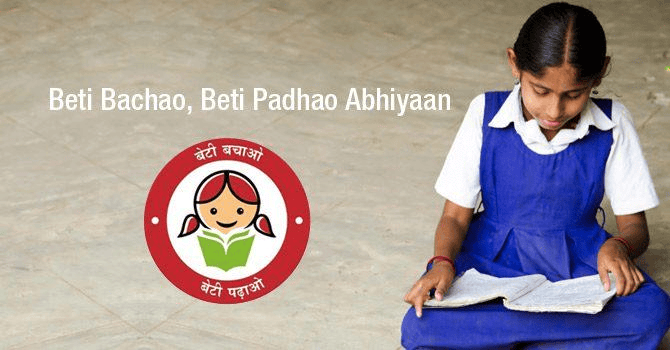
Why in news?
The Ministry of Women and Child Development has initiated a 10-day nationwide celebration in honor of the International Day of the Girl Child, running from October 2 to October 11, 2023. This event is part of the Beti Bachao Beti Padhao (BBBP) initiative, and this year’s theme is “Girls’ Vision for the Future.” This theme emphasizes the critical need for gender equality, education, and better opportunities for young girls.
History
- The 1995 Beijing Declaration and Platform for Action was the first comprehensive plan aimed at promoting and advancing the rights of girls.
- In 2011, the United Nations General Assembly adopted Resolution 66/170, designating October 11 as the International Day of the Girl Child.
BBBP Scheme
- The BBBP initiative was launched in January 2015 to combat sex-selective abortions and improve the declining child sex ratio, which was recorded at 919 girls for every 1,000 boys in 2011.
- This program is a collaborative effort involving the Ministry of Women and Child Development, the Ministry of Health and Family Welfare, and the Ministry of Human Resource Development.
- The initiative is being executed across 640 districts throughout the country.
Government Initiatives to Promote Gender Parity
- Scheme for Adolescent Girls: Aimed at supporting adolescent girls through various educational and health initiatives.
- Sukanya Samriddhi Yojana: A savings scheme designed to encourage parents to save for the education and marriage of their daughters.
Global Hunger Index 2024
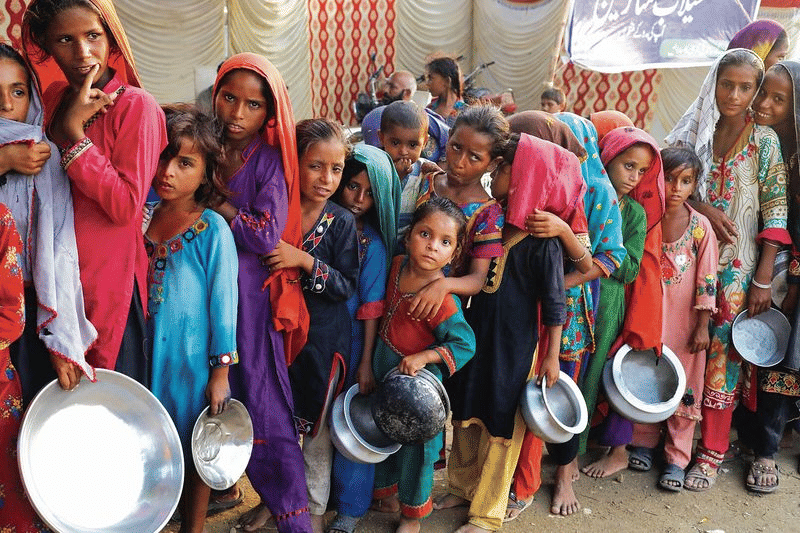
Why in news?
Recently, India ranks 105th out of 127 countries in the Global Hunger Index (GHI) with a score of 27.3, highlighting a "serious" hunger crisis driven by ongoing challenges of food insecurity and malnutrition.
What are the Key Findings of the Report?
India-Specific Findings
- GHI Score (2024) - 27.3 ('serious'), a slight improvement from GHI Score (2023) - 28.7 ('serious').
- Undernourished children - 13.7%
- Stunted children - 35.5%
- Wasted children - 18.7% (highest globally)
- Child mortality rate - 2.9%
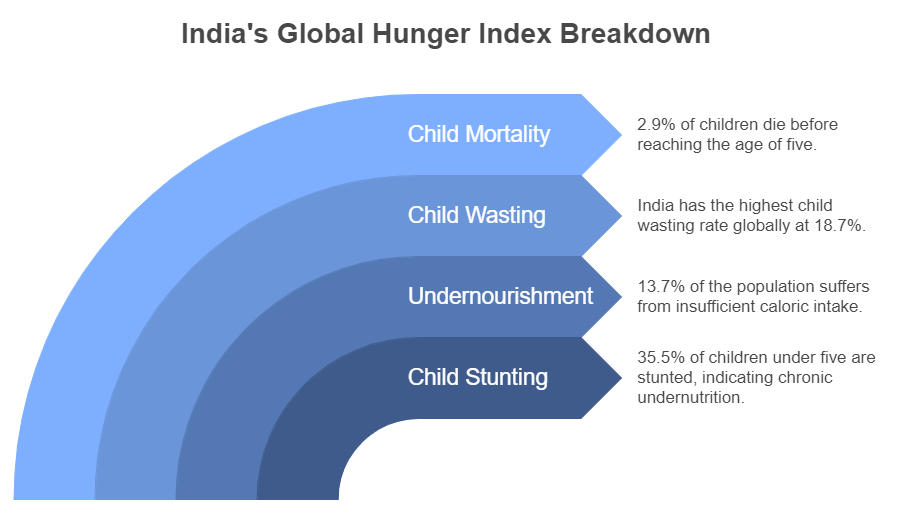

Global Trends in GHI 2024
- The 2024 GHI score for the world is 18.3, a slight improvement from 18.8 in 2016, and is considered "moderate."
- South Asian neighbours like Bangladesh, Nepal, and Sri Lanka perform better, ranking in the "moderate" category.
Recognizing India's Efforts
- The report acknowledges India's significant efforts to improve the food and nutrition landscape through various initiatives such as:
- Poshan Abhiyan (National Nutrition Mission)
- PM Garib Kalyan Yojana (PMGKAY)
- National Mission for Natural Farming
Insufficient GDP Growth
- The report highlights that Gross Domestic Product (GDP) growth does not guarantee reduced hunger or improved nutrition, emphasizing the need for policies focused on pro-poor development and addressing social and economic inequalities.
What is India's Response to GHI 2024?
- Faulty Methodology: The Ministry of Women and Child Development criticized the absence of data from their Poshan Tracker, which reportedly indicates a much lower child wasting rate of 7.2%.
- Focus on Child Health: The government noted that three out of the four GHI indicators pertain to children's health and may not provide a complete representation of the entire population.
- Small Sample Size: The government expressed doubts about the accuracy of the "Proportion of Undernourished Population" indicator, citing that it is based on a small sample size opinion poll.
What are the Challenges Related to Hunger in India?
- Inefficient Public Distribution System (PDS): Despite improvements, India's PDS still faces challenges in reaching all intended beneficiaries. National Food Security Act covers 67% of the population, yet over 90 million eligible individuals have been excluded from legal entitlements under the Targeted Public Distribution System (TDPS).
- Income Inequality and Poverty: While India has made strides in poverty reduction (24.82 crore Indians escaping Multidimensional Poverty in the last 9 years), significant income disparities persist, affecting access to food.
- Nutritional Challenges and Dietary Diversity: Food security in India often focuses on calorie sufficiency rather than nutritional adequacy.
- Urbanization and Changing Food Systems: Rapid urbanization in India is reshaping food systems and consumption patterns. A 2022 study by the Tata-Cornell Institute found that 51% of urban slum households in Delhi experienced food insecurity.
- Gender-Based Nutritional Gap: Gender-based disparities exacerbate hunger and malnutrition in India. Women and girls often face unequal access to food within households, receiving smaller portions or lower-quality meals. This inequity, coupled with maternal and child care demands, heightens their vulnerability to chronic undernutrition.
Way Forward
- PDS Enhancement: Revamp the Public Distribution System (PDS) to enhance transparency, reliability, and affordability of nutritious food, benefiting the economically disadvantaged.
- Social Audit and Awareness: Implement social audits of the mid-day meal scheme in all districts with local authority involvement. Enhance program monitoring through IT and establish community-driven nutrition education programs in local languages, focusing on balanced diets for women and children.
- Complementing With SDGs: Sustainable Development Goals (SDGs), particularly SDG 12 (Responsible Consumption and Production) and SDG 2 (Zero Hunger), focus on sustainable consumption patterns.
- Investment in Agriculture: A holistic food systems approach promoting diversified and nutritious food production, including nutri-cereals and millets, is essential. Addressing food wastage is critical, with a key approach being the improvement of warehousing and cold storage infrastructure to reduce post-harvest losses.
- Health Investments: Focus on maternal and child health through better water, sanitation, and hygiene practices.
- Interlinking Factors: In policy-making, recognizing the interconnection between gender, climate change, and nutrition is crucial, as these factors significantly impact public health, social equity, and sustainable development.
Mains Question
Q: Critically analyze India's 2024 Global Hunger Index ranking and its implications for food security and nutrition. Evaluate the effectiveness of government initiatives like the National Food Security Act and suggest strategies for improvement.
Mera Hou Chongba
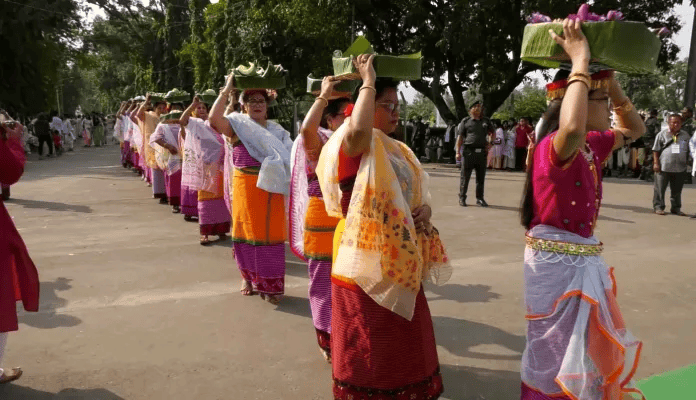
Why in news?
Recently, the Mera Hou Chongba festival was celebrated in Manipur, highlighting the theme of unity among indigenous communities.
About Mera Hou Chongba Festival
- The Mera Hou Chongba festival is an annual celebration aimed at fostering strong relationships between indigenous groups residing in both the hills and valleys of Manipur.
- This festival is unique as it is the only occasion where indigenous communities from the hills and valleys come together to celebrate.
- Its roots date back to the time of Nongda Lairen Pakhangba in the first century C.E.
- The festival is observed every year in the month of Mera, which corresponds to September or October, and involves participation from village chiefs and people from nearby hill areas.
- During the festival, village chiefs, known as Khullakpas, gather alongside officials from the royal palace on the same platform.
- Communities such as Mao, Kabui, Zeme, Kom, and Liangmei, among others, actively take part in this event.
- The main highlights of the Mera Hou Chongba festival include:
- Exchange of gifts between the King and the village chiefs.
- Cultural performances showcasing the rich traditions of the various communities.
- Sports activities that bring together participants in a spirit of friendly competition.
Ban on Child Betrothals
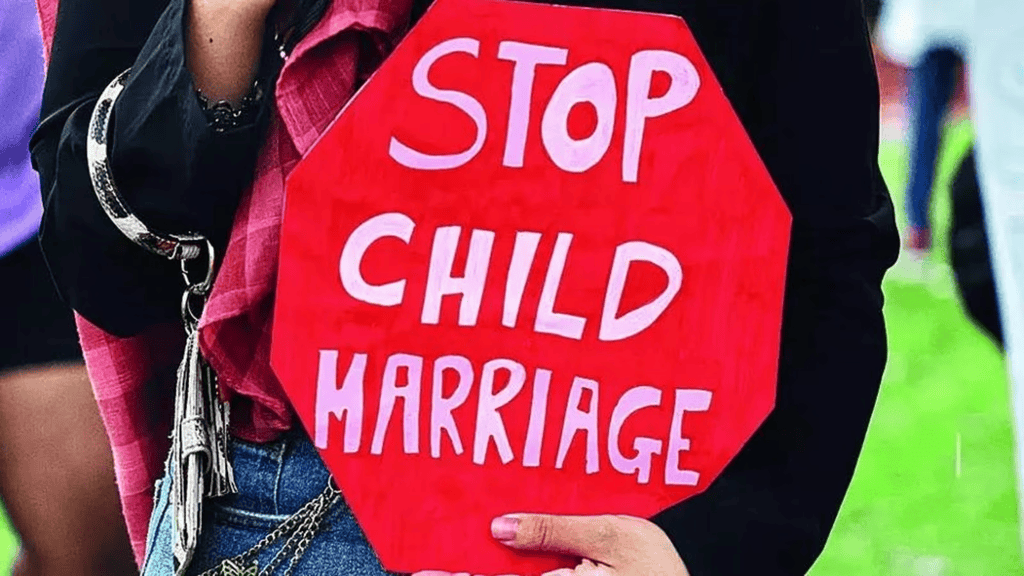
Why in News?
The Supreme Court highlighted that marriages arranged during a child's minority infringe upon their "free choice" and "childhood," and urged the Parliament to outlaw child betrothals.
- According to the court, India had yet to fully address the issue of minor betrothals, despite the Convention on the Elimination of All Forms of Discrimination against Women (CEDAW) recognizing the problem in 1977.
- The Prohibition of Child Marriage Act (PCMA) of 2006 criminalized child marriage but did not explicitly prohibit the practice of betrothal.
Status of Child Marriage in India
History
- Historical texts indicate that early marriages were common, especially for girls, often for socio-economic reasons or to ensure family alliances. In the medieval era, these practices became more entrenched due to certain cultural norms. The age of marriage for girls decreased, with marriages often arranged shortly after puberty.
- The British colonial government, influenced by reformers like Raja Ram Mohan Roy and Ishwar Chandra Vidyasagar, recognized the adverse effects of child marriage and began legislative actions.
- Notable laws include the Age of Consent Act of 1891, which raised the age of consent for marriage to 12, and the Child Marriage Restraint Act (Sarda Act) of 1929, setting the minimum marriage age at 14 for girls and 18 for boys.
Status:
- The prevalence of girl child marriages has decreased from 49% in 1993 to 22% in 2021. Similarly, boy child marriages fell from 7% in 2006 to 2% in 2021. However, between 2016 and 2021, progress plateaued, with some states experiencing a rise in child marriages.
- Notably, six states saw an increase in girl-child marriages, including Manipur, Punjab, Tripura, and West Bengal, while eight states reported a rise in boy-child marriages, such as Chhattisgarh, Goa, Manipur, and Punjab.
Legal Measures to Prevent Child Marriage
- Prohibition of Child Marriage Act (PCMA) in 2006.
- In the case of Independent Thought v. Union of India (2017), the Supreme Court ruled that sexual intercourse between a man and his wife, if she is aged between 15 and 18 years, constitutes rape, thereby raising the age of consent for marital sexual intercourse to 18 years.
Government Initiatives
- Beti Bachao Beti Padhao scheme
- Dhanalakshmi Scheme: A conditional cash transfer program for girl children, offering insurance coverage for medical expenses and promoting education to eliminate child marriage.
What is the Prohibition of Child Marriage Act (PCMA) 2006?
- Objective: The Act prohibits the solemnization of child marriages and aims to protect children from early marriages.
- Legal Age for Marriage: The legal age is set at 18 for women and 21 for men.
- Voidable Marriages: Marriages involving minors can be declared voidable, allowing annulment within two years of reaching adulthood.
- Punishments: The Act prescribes penalties, including imprisonment and fines, for those involved in facilitating child marriages.
- Child Marriage Prohibition Officers: States are empowered to appoint officers to prevent child marriages and enforce the law.
- Protection and Maintenance: The Act ensures the protection of minors in such marriages, including the right to maintenance until remarriage.
- Applicability: The Act overrides customs and laws that allow child marriages, ensuring universal protection across India.
What did the Court Judgement say?
- Equal Right to Childhood: The court emphasized that patriarchal notions often lead to violence against child brides, noting that the right to childhood is universal.
- Child Marriage Threatening Modern Laws: The practice undermines laws like the POCSO Act, exposing minors to abuse.
- Objectification in Child Marriages: Child marriages impose adult responsibilities on children, disrupting their natural development.
- Disruption of Natural Sexuality: The court stated that child marriage hampers a person's ability to experience healthy intimacy.
What are the Guidelines Issued By the Court?
- Guidelines for Sexuality Education: The court directed the government to provide age-appropriate sexuality education in schools.
- Child Marriage Free Village Initiative: Proposed a campaign to create 'Child Marriage Free Villages' engaging local leaders.
- Online Reporting Portal: Recommended establishing a portal for reporting child marriages.
- Compensation Scheme: Urged the Ministry of Women and Child Development to create a compensation scheme for girls exiting child marriages.
- Annual Budget Allocation: Called for a dedicated budget to prevent child marriages and support affected individuals.
What are the Challenges to Implement PCMA?
- Cultural Norms and Societal Attitudes: Deep-rooted beliefs support child marriage, making it hard to change attitudes.
- Inadequate Enforcement of Laws: The enforcement of PCMA remains weak, with low conviction rates.
- Gender Inequality: Gender discrimination perpetuates child marriage, as girls are often seen as economic burdens.
- Influence of Peer Pressure: Misinformation among children can normalize child marriage, necessitating community engagement.
- Lack of Awareness and Education: Many lack knowledge about the legal provisions against child marriage and its effects, highlighting the need for educational campaigns.
Way Forward
- Strengthen Legal Framework and Enforcement: Improve accountability of local authorities and law enforcement regarding the PCMA.
- Expand Educational and Economic Opportunities for Girls: Invest in girls' education and financial support to delay marriage.
- Strengthen Support Systems and Health Services: Develop support networks and healthcare services tailored to the needs of at-risk girls.
- Implement Comprehensive Awareness Campaigns: Launch campaigns to inform communities about the negative impacts of child marriage.
Mains Question
Q: Discuss the implications of child marriage on the rights of children in India. Analyze the effectiveness of the Prohibition of Child Marriage Act, 2006.
Chenchu Tribe
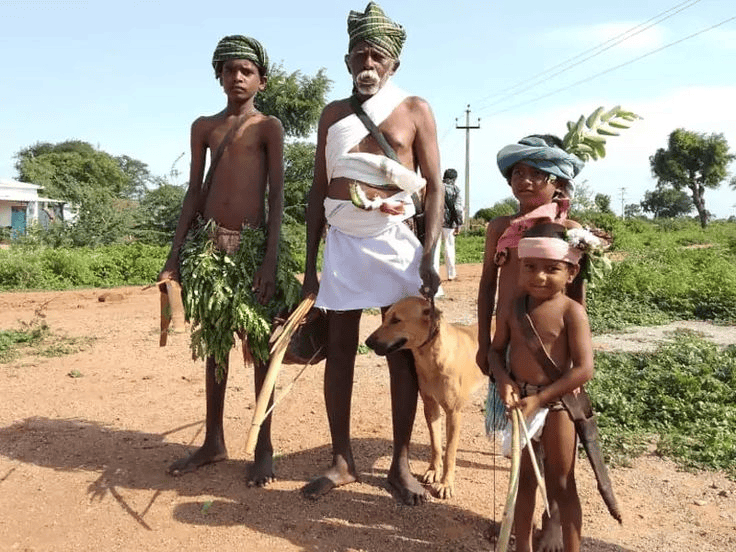
Why in News?
The Chenchu tribe in Andhra Pradesh is facing significant challenges due to the termination of the Mahatma Gandhi National Rural Employment Guarantee Scheme (MGNREGS) Chenchu Special Project. This discontinuation has adversely affected their livelihoods, food security, and access to vital services, including healthcare and education.
Who are Chenchus?
- The Chenchus, also referred to as 'Chenchuvaru' or 'Chenchwar', are the smallest Scheduled Tribe in Odisha by population.
- Their traditional lifestyle revolves around hunting and foraging for food.
- They are recognized as one of the oldest tribes speaking Telugu.
- Among the 12 Particularly Vulnerable Tribal Groups (PVTGs) in Andhra Pradesh, they are classified as such due to their low literacy rates, stagnant population growth, and restricted access to development.
- The Chenchus primarily inhabit forested areas, particularly the Nallamala forest and its surroundings, depending on forest resources for their livelihoods.
What is MGNREGS?
- MGNREGS is one of the largest work guarantee programs globally, initiated in 2005 by the Ministry of Rural Development.
- The program guarantees legal employment for 100 days each financial year to adult members of rural households willing to engage in public work involving unskilled manual labor at the minimum statutory wage.
- It emphasizes a rights-based approach to address chronic poverty, differing from earlier employment guarantee schemes.
- To promote gender equity, at least one-third of the beneficiaries must be women.
- Wages are mandated to align with the minimum wage standards for agricultural workers as outlined in the Minimum Wages Act of 1948.
Fighting Naxalism
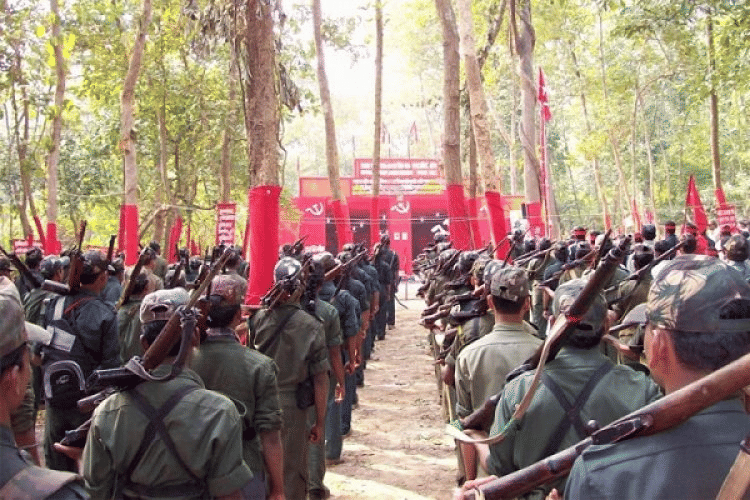
Why in News?
At least 28 Maoists were killed by security forces during a gunfight in the Bastar region of Chhattisgarh.
About Naxalism
- Naxalism or Left Wing Extremism (LWE) is a significant threat to India's internal security.
- Naxal-affected regions in India are referred to as the 'Red Corridor'.
- Reason for Naxalism: Naxalites aim to overthrow the government using violence.
- They openly reject the democratic process of voting and choose violence to achieve their goals.
- Initial Stage: The Naxal movement began with a tribal-peasant uprising against landlords in Naxalbari village, located in the Darjeeling district of West Bengal, in 1967.
- The uprising was led by figures like Charu Majumdar, Kanu Sanyal, and Jangal Santhal.
- Communist Party of India (Maoist): In 2004, two main Naxal groups, the Maoist Communist Centre of India (MCCI) and People’s War, merged to form the CPI (Maoist).
- By 2008, most other Naxal groups had joined the CPI (Maoist), which became the main group of Naxal outfits.
- The CPI (Maoist) and its affiliated organizations are classified as banned terrorist organizations under the Unlawful Activities (Prevention) Act, 1967.
Presence of Maoists in India
- The states of Chhattisgarh, Jharkhand, Orissa, and Bihar are considered severely affected.
- The states of West Bengal, Maharashtra, and Andhra Pradesh are partially affected.
- The states of Uttar Pradesh and Madhya Pradesh are slightly affected.
- The CPI (Maoist) is attempting to extend its influence into the southern states of Kerala, Karnataka, and Tamil Nadu, aiming to connect the Western and Eastern Ghats.
- They are also trying to enter Assam and Arunachal Pradesh, which poses serious long-term strategic threats.
Causes of Naxalism
- Marginalisation: Naxalites mainly come from marginalized groups, including Dalits and Adivasis.
- The key issues involve land reforms and economic development. Their ideology is influenced by Maoism.
- Support Base: The Naxalite movement has backing from landless people, sharecroppers, agricultural workers, Harijans, and tribal communities.
- As long as these groups face exploitation and lack of social justice, their support for Naxalites will endure.
- Forest Management and Livelihood: For tribal people, forests, land, and water are essential for survival. Their deprivation of these resources has fueled resentment towards authorities.
- Lack of Development: Areas affected by Naxalism suffer from inadequate development, including poor healthcare, lack of drinking water, roads, electricity, and educational facilities.
Challenges Posed by Naxalites
- Vulnerability to External Threats: The Maoist movement reveals weaknesses in India's internal security, leaving the country exposed to external dangers.
- The CPI (Maoist) maintains links with various insurgent groups in the Northeast, many of which are connected to hostile external forces.
- They have also expressed support for terrorist groups in Jammu and Kashmir.
- Impediments to Economic Development: Maoists focus on impoverished regions, disrupting internal stability necessary for economic growth.
- Additional Security Costs: Efforts to combat Naxalite activities divert essential resources from social development projects.
- Negative Impact on Governance: In areas dominated by Maoists, governance breaks down due to violence, leading to the collapse of public service systems through killings, kidnappings, and extortion.
Government of India's Approach
- Deployment of Central Armed Police Forces (CAPFs): CAPFs are stationed alongside state police in regions affected by LWE.
- Security Related Expenditure (SRE) Scheme: This scheme provides funds for operational needs of security forces, rehabilitation of surrendered extremists, and awareness campaigns against violence.
- Review and Monitoring: The government has established various mechanisms to regularly monitor and review the situation.
- Strengthening Intelligence Gathering: Steps have been taken to enhance the capabilities of intelligence agencies, including improved sharing of information.
- Better Inter-state Coordination: The government facilitates regular meetings to improve cooperation among bordering districts affected by LWE.
- Tackling IED Threats: The Union Home Ministry has developed guidelines for dealing with explosives used by Maoists.
- Enhanced Air Support: State governments and CAPFs have received increased aerial support for anti-Naxal operations and medical evacuations.
Way Forward
- There is a general agreement that the Naxal issue should be addressed through a mix of development and security measures.
- This challenge should not be seen solely as a law enforcement problem, as innocent tribals can become victims of Naxal violence.
- Re-establishing control in Naxal-affected areas, promoting development, and ensuring a secure and dignified life for marginalized populations is crucial.
- Importantly, due to government initiatives, violence related to LWE has significantly decreased over recent years.
Indian Institute of Skills (IIS)
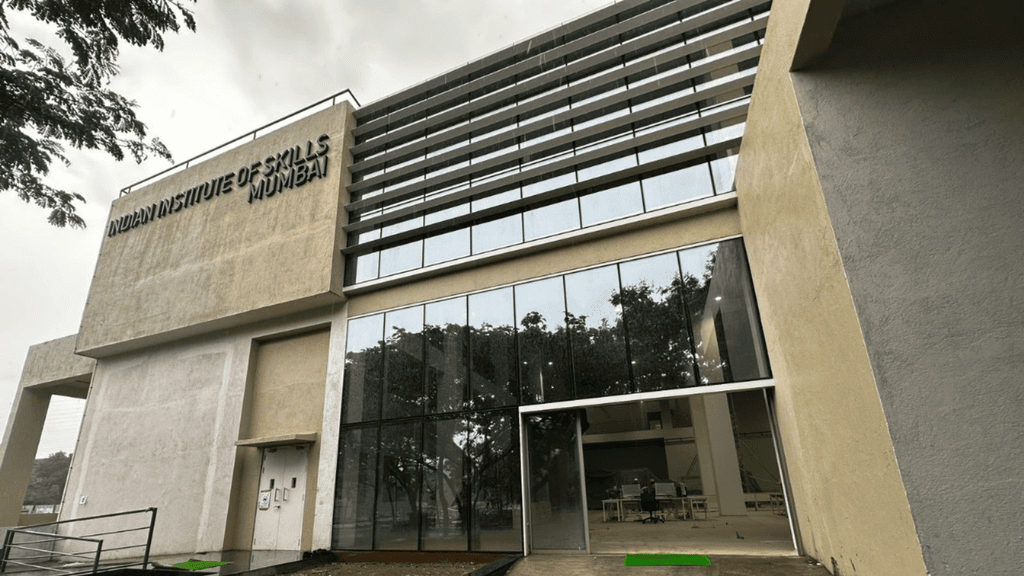
Why in News?
Prime Minister Narendra Modi recently opened the Indian Institute of Skills (IIS) in Mumbai. This institute is meant to train individuals for future careers, specifically focusing on skills needed for Industry 4.0, which is characterized by smart factories and advanced technology.
Objectives of the IIS
The main goal of the IIS is to prepare workers with modern skills required in various industries, such as:
- Factory Automation (using machines and technology in manufacturing)
- Digital Manufacturing (utilizing digital tools to produce goods)
- Mechatronics (integrating electronics and mechanical systems)
- Artificial Intelligence (AI) (machines that can learn and make choices)
- Data Analytics (examining data to improve decisions)
- Additive Manufacturing (creating objects through 3D printing)
Public-Private Partnership Model
- The IIS was established through a Public-Private Partnership (PPP), which is a collaboration between the Government of India and Tata Trusts, a major charitable organization.
- This partnership combines government support with industry knowledge to develop high-quality training programs.
Specialized Courses
The institute will start by offering six specialized courses aimed at training students in advanced technical skills. These courses include:
- Advanced Industrial Automation & Robotics (using robots in factories)
- Industrial Automation Fundamentals (basic understanding of automated systems)
- Advanced ARC Welding Techniques (specialized welding methods used in industries)
- Additive Manufacturing (working with 3D printing technology)
- Electric Vehicle Battery Specialist (expertise in electric vehicle batteries)
- 2 & 3 Wheeler EV Technician (servicing electric motorcycles and scooters)
Facilities and Practical Training
- To provide students with practical experience, the IIS will feature sophisticated laboratories developed in partnership with over 15 global and Indian OEMs (original equipment manufacturers).
- This setup ensures that students can work with actual industry equipment, making their training more applicable to what employers seek.
Industry Relevance
Graduates from the IIS will be equipped for jobs in rapidly expanding sectors, such as:
- Electric Vehicle (EV) Manufacturing
- Artificial Intelligence (AI)
- Robotics
Short-Term Courses
The IIS will also provide short-term training programs in collaboration with industry leaders. For example:
- Industrial Robotics training with Fanuc India
- Industrial Automation training with SMC India
- Culinary & Housekeeping training with Taj Skyline
These short courses will allow students to quickly gain specific skills and be ready for jobs in a shorter period.
Vision for the Future
- Jayant Chaudhary, a key figure in the project, mentioned that the IIS plays a crucial role in fulfilling the Prime Minister's vision of making India the ‘Skill Capital of the World’.
- By offering advanced training, the institute aims to equip young people with the skills necessary for success both in India and internationally.
Related Initiatives
- On the same day, PM Modi also launched the Vidya Samiksha Kendra (VSK) in Maharashtra. The VSK utilizes technology and AI to enhance educational systems across the country.
- Currently, there are 30 VSKs nationwide, all aimed at making data-driven decisions to improve the quality of education and student outcomes.
Two billion Women Lack Social Protection: UN Women
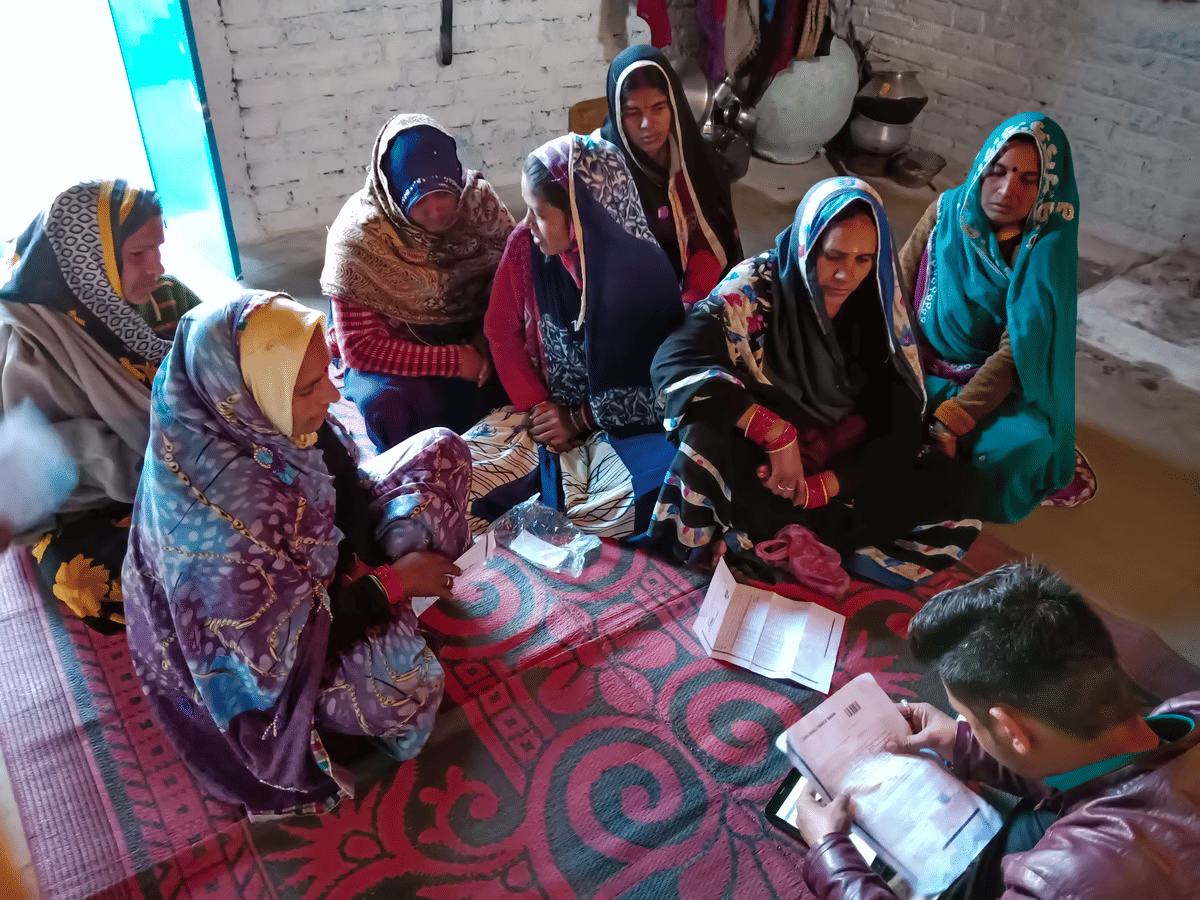
Why in News?
- The report by UN Women shows a growing gender gap in social protection.
About the Report
- It states that around two billion women and girls do not have any access to social protection.
- This lack of protection threatens progress towards Sustainable Development Goal 5 (SDG 5).
- Women aged 25 to 34 are 25% more likely to live in extreme poverty compared to men in the same age group.
- Conflict and climate change worsen this inequality, with women in unstable areas being 7.7 times more likely to live in extreme poverty than those in stable regions.
- Globally, more than 63% of women give birth without any maternity benefits, with 94% in sub-Saharan Africa lacking these benefits.
Indian Scenario
Health and Nutrition
- The National Family Health Survey (NFHS-5) shows that 23.3% of women (aged 15-49) are undernourished.
- 57% of women are reported to be anemic.
- The Maternal Mortality Ratio (MMR) in India is 97 per 100,000 live births in 2023, a decrease from 130 in 2014.
Gendered Poverty
- According to Oxfam, 63% of women in India are involved in unpaid caregiving, which limits their ability to earn an income.
- Only about 37% of women aged 15 and older participate in the workforce, compared to 73% of men.
- As per NFHS-5, 70.3% of females are literate, in contrast to 84.7% of males.
Reasons for Women's Vulnerability
- Cultural norms and expectations limit women's chances to work formally and achieve economic independence.
- Educational barriers such as early marriage, violence against girls in schools, and lack of sanitation affect girls' attendance and retention.
- Many women work in the informal sector, which offers low pay, irregular hours, and little job security.
Government Initiatives
- Beti Bachao Beti Padhao (BBBP): Aimed at improving the declining girl child ratio and supporting girls’ education.
- Pradhan Mantri Matru Vandana Yojana (PMMVY): Provides financial help to pregnant and nursing mothers for safe delivery and nutrition.
- Ujjwala Scheme: Offers free LPG connections to women from below poverty line households to reduce health risks from traditional cooking methods.
- Poshan Abhiyaan: Focuses on enhancing nutrition for children, pregnant women, and new mothers.
- Digital Literacy Programme for Women: Part of the Pradhan Mantri Gramin Digital Saksharta Abhiyan (PMGDISHA), helping women access online services and participate in the digital economy.
- One Stop Centre Scheme (Sakhi Centres): Provides various services for women affected by violence, including legal aid, medical help, and temporary shelter.
Way Ahead
- The struggles of women stem from deep-rooted patriarchal norms, unfair practices, economic disparities, and a lack of policies aimed at their specific needs.
- Addressing these issues requires a thorough approach that improves access to education, health care, and legal rights, while also promoting gender-sensitive social protection policies.
- Gender budgeting is essential for advancing equality, empowering women, and ensuring sustainable development in India.
Rural Youth Lead India’s Digital Transformation

Why in News?
Rural Youth are considered the key players in India’s future, especially with the ongoing digital transformation.
About
- Rural India is experiencing a significant change as more young people are adopting technology and connecting to the digital world.
- The use of mobile technology is increasing, with many rural youths incorporating digital tools into their everyday activities.
Data Analysis
- Mobile Usage: A high adoption rate with 95.7% of rural youth aged 15-24 using mobile phones; 99.5% have access to 4G.
Internet Access:
- 82.1% of rural youth can access the internet, showing rapid growth.
- 80.4% of rural youth used the internet in the last three months before the survey.
- Internet usage is on the rise, narrowing the gap with urban areas, where the rate is 91.0%.
Impact of Digitalization
Digital skillsare improving:
- 74.9% of rural youth can send basic messages.
- 67.1% can manage data (like copying and pasting).
- 60.4% actively look for information online.
- The spread of digital technology is helping rural youth improve their communication, education, and financial activities.
- This move towards digital is making life more efficient and empowering individuals, especially in rural regions.
Challenges in Digital Skills
- Email skills are limited, with only 43.6% able to send emails.
- Online banking skills are also low, with just 31% able to perform transactions.
Government Initiatives
- Digital India Initiative: Promotes technology and innovation through several programs (like TIDE 2.0 and GENESIS).
- BharatNet Project: Aims to connect rural areas with optical fiber for broadband access.
- Public Wi-Fi Initiatives: PM-WANI provides public Wi-Fi hotspots throughout India.
Future Outlook
- The growth of digital technology in rural India is helping young people embrace technology, leading to major changes in daily life and reducing the gap between urban and rural areas.
- Ongoing improvements in digital skills and infrastructure will help rural youth play an important role in creating a more connected and inclusive India.
Communal Violence

Why in News?
Communalism is the belief that one's own religious community is more important than others, which can often lead to conflicts and violence between different religious groups. It also refers to political ideas and movements that promote this mindset. As an ideology, communalism focuses on the interests and identity of a specific religious community rather than those of society as a whole.
What is Communalism?
As a political movement, communalism aims to unite members of a specific religious community for political action. In India, communalism has been a significant cause of social conflict with political consequences.
Different Forms of Communalism
- Assimilationist: This perspective suggests that minority community members should abandon their unique cultural and religious identities to fit into the dominant culture. For example, the Hindu Code Bill applies not only to Hindus but also to Sikhs, Buddhists, and Jains.
- Welfarist: This viewpoint supports providing special welfare and affirmative action programs to help minority communities improve their socio-economic conditions. An example is how Jain community associations offer resources like hostels, scholarships, and job opportunities.
- Retreatist: This approach sees minority communities withdrawing into their own separate groups, distancing themselves from the dominant culture. An example is Bahaism, where members are discouraged from participating in political activities.
- Retaliatory: This form involves communities retaliating against the dominant culture in response to perceived discrimination. The Assam Violence of 2012 between the Bodos and Bengali-speaking Muslims illustrates this.
- Separatist: Separatists advocate for creating independent states for minority communities. In the 1980s, there was a movement among some religious fundamentalists in Punjab for Khalistan, a separate nation.
Evolution of Communalism in India
Communalism in India has developed over time due to various events and policies. Key incidents include:
- Divide and Rule: The British colonial strategy of divide and rule significantly contributed to the rise of communalism by fostering divisions between communities.
- Partition of Bengal: The British partitioned Bengal in 1905, creating a Muslim-majority province in the east and a Hindu-majority province in the west.
- Communal Award: In 1932, the British introduced the Communal Award, which allocated legislative assembly seats to different communities based on their population.
- Appeasement Policy: The British government's tendency to favor one community over others increased communal tensions and alienation.
Causes of Communalism in India
The causes of communalism are complex and vary by context. Some major causes include:
- Historical Factors: British colonial policies created divisions and tensions among different religious communities.
- Political Factors: Competition for power and divisive political messaging can fuel communalism, as some leaders may use communal rhetoric to gain support.
- Socio-Economic Factors: Issues like poverty and unemployment can drive competition for resources, leading to communal tensions.
- Socio-Cultural Factors: Differences in caste, class, and regional identities contribute to communal issues. For instance, the caste-based reservation system can create tensions between communities.
- Role of Media: Media can play a significant role in spreading communal ideologies and misinformation, exacerbating tensions.
- Religious Factors: Extremist religious ideologies can incite violence, as seen with some fringe groups that provoke communal conflict.
Effects of Communalism in India
India has experienced several significant communal incidents, including:
- The Partition of India (1947): This event resulted in the creation of Pakistan and led to widespread violence and the displacement of millions.
- Anti-Sikh Riots (1984): Following Indira Gandhi's assassination, riots broke out, leading to the deaths of over 4,000 Sikhs in various regions.
- Babri Masjid Demolition (1992): The destruction of a mosque in Ayodhya by Hindu nationalists sparked riots, resulting in over 2,000 deaths.
- Gujarat Riots (2002): Communal riots in Gujarat led to more than 1,000 deaths and displaced over 150,000 people.
- Assam Violence (2012): Tensions between the Bodos and Bengali-speaking Muslims escalated due to competition for resources.
- Muzaffarnagar Riots (2013): This series of riots in Uttar Pradesh resulted in over 60 deaths and the displacement of 50,000 people.
- Delhi Riots (2020): Major violence occurred in February 2020, resulting in over 50 deaths and injuries to hundreds, along with many displacements.
Addressing Communalism in India
Tackling communalism in India is a complex challenge that requires various strategies:
- Promoting Social Harmony: Encouraging interfaith dialogue and cultural exchanges can help build understanding and respect among communities.
- Addressing Socio-Economic Inequalities: Reducing poverty and unemployment can lessen competition for resources, helping to lower communal tensions.
- Holding Political Leaders Accountable: Ensuring that leaders are responsible for divisive actions and rhetoric can help reduce communal ideologies used for political gain.
- Media Monitoring: Regulating the media to prevent misinformation and hate speech can help mitigate communal tensions.
- Implementing Legal Measures: Enforcing laws against incitement of violence based on communal identity can help reduce tensions.
- Addressing Historical Issues: Recognizing and dealing with past injustices can help ease communal tensions.
- Promoting Secularism: Supporting a neutral stance towards all religions can help decrease communal tensions.
|
112 videos|389 docs
|
















